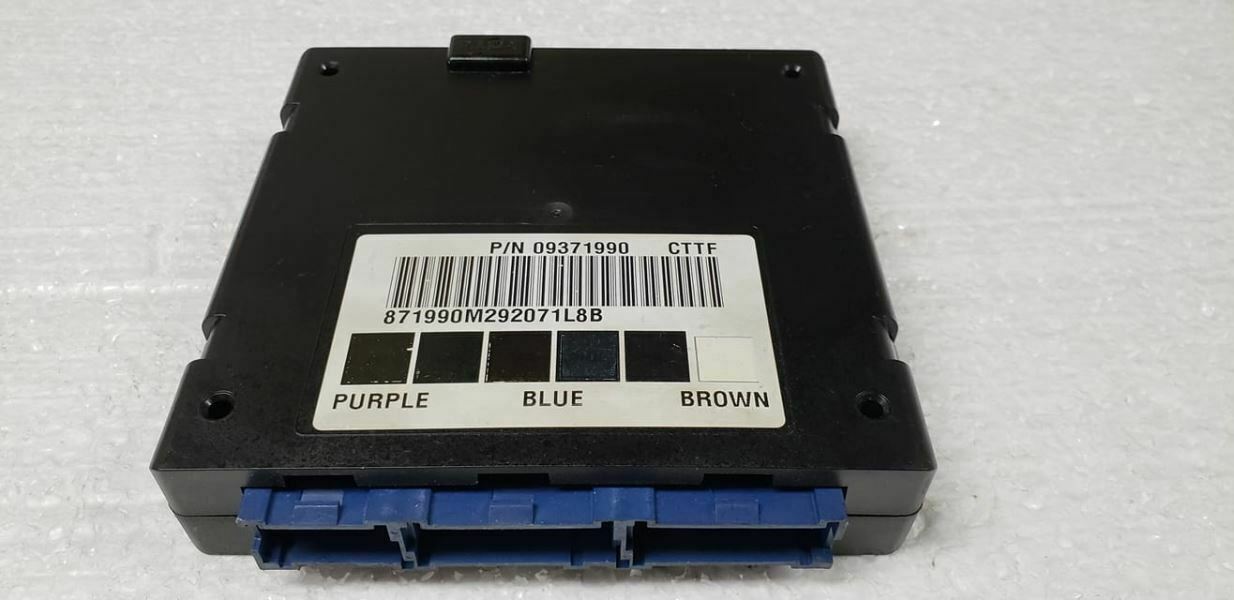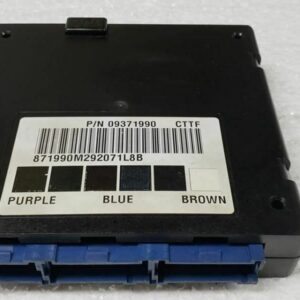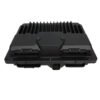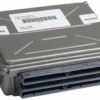Tired of Your Truck’s Electrical Gremlins? Take Control Again.
If you’re dealing with a 2000 Suburban 2500 that seems to have a mind of its own, you’re not alone. Flickering dash lights, power windows and locks that work intermittently, a security light that won’t shut off, or a frustrating no-start condition—these are all classic signs of a failing Body Control Module (BCM). As the central hub for your vehicle’s body electronics, when the BCM goes bad, it can cause widespread and confusing issues. In my 20+ years as a diagnostician, I’ve seen these modules cause more headaches than almost any other electronic component on these GM trucks.
This isn’t just a replacement part; it’s a direct solution. We take a reliable BCM, service number 09385236, and flash it with the latest official GM software specifically for your vehicle. All we need is your VIN during checkout. This means you get a module that’s ready to install right out of the box, restoring the proper function you’ve been missing without a mandatory, expensive trip to the dealership for programming. This is the smart, efficient way to fix your truck and get it back to being the reliable workhorse it was meant to be.
A Technician’s Notebook: The Common BCM Failure
I remember a 2000 Silverado 2500 that came into the bay with the classic complaint: “Sometimes it starts, sometimes it doesn’t.” The security light was on, and the power locks were dead. The owner had already replaced the battery and ignition switch. After hooking up the scan tool, I saw communication loss codes with the BCM. On these specific modules (like the 09385236), the root cause is often internal failure of the circuit board—specifically, cold or cracked solder joints on the main processor from years of heat cycles and vibration. This creates an intermittent connection, explaining why the problems come and go. A simple replacement with a pre-programmed unit like this one is the most reliable, long-term fix.
Is Your Truck Showing These Symptoms?
- ✔ Power windows, mirrors, or door locks operating erratically or not at all.
- ✔ The security or anti-theft light stays on, preventing the engine from starting.
- ✔ Interior dome lights or dashboard lights flicker or fail to work correctly.
- ✔ The radio or instrument cluster randomly loses power.
- ✔ False warnings on the driver information center (e.g., “Service Vehicle Soon”).
- ✔ Communication-related Diagnostic Trouble Codes (DTCs), such as U-series codes (e.g., U1000, U0140).
- ✔ Horn or alarm sounding unexpectedly.
Your Straightforward BCM Installation Guide
Replacing the 2000 Suburban 2500 BCM is a manageable job for a DIYer with basic tools. It’s typically located under the driver’s side of the dashboard, to the left of the steering column.
- Safety First: Always disconnect the negative terminal from your vehicle’s battery and wait a few minutes before starting work.
- Access the Module: You will likely need to remove the lower dash panel (knee bolster) to gain access. It’s usually held in by a few screws and clips.
- Locate the BCM: Identify the BCM. It’s a plastic box with several large multi-pin electrical connectors. Our photos can help you identify it.
- Disconnect and Remove: Carefully unplug all electrical connectors. They have locking tabs that need to be depressed. Once disconnected, unbolt or unclip the old module from its mounting bracket.
- Install the New Module: Mount your new, pre-programmed BCM in the same location and securely plug in all the connectors. You’ll hear a click as they lock into place.
- Reconnect and Test: Reconnect the negative battery terminal. Turn the key to the ‘ON’ position and test all body functions—windows, locks, lights, etc.—to ensure everything is working as expected.
Important Post-Installation Steps
Because this 2000 Suburban 2500 BCM is pre-programmed, most functions will work immediately. However, depending on your vehicle’s specific configuration, a couple of final sync procedures may be needed if you see a warning light:
- Airbag System Sync: If your airbag warning light is on after installation, a professional scan tool is required to perform the “Setup SDM Primary Key in BCM” procedure. This syncs the new BCM with the airbag module.
- Brake Pedal Position Relearn: On some models, a brake pedal position sensor relearn may be needed to ensure correct brake light and traction control operation. This also requires a capable scan tool.
Disclaimer: Always consult a factory service manual or a qualified technician if you are unsure about any step. These procedures can vary slightly by model.
Verified Fitment for Your GM Truck or SUV
This module is a direct replacement for part numbers 09385236, 19208539, and 9371990. It is guaranteed to fit the following vehicles:
- 2000 Chevrolet Suburban 1500 & 2500
- 2000 GMC Yukon XL 1500 & 2500
- 2000 Chevrolet Silverado 1500 & 2500 Pickup
- 2000 GMC Sierra 1500 & 2500 Pickup
- 2000 Chevrolet Tahoe & GMC Yukon (exc. Denali)
- 2001 Chevrolet S10 / GMC Sonoma
- 2001 Chevrolet Blazer / GMC Jimmy S15
- 2001 Oldsmobile Bravada
- 2001 Chevrolet Astro / GMC Safari
Frequently Asked Questions
Why do you need my VIN?
Your Vehicle Identification Number (VIN) allows us to program the BCM with the exact software and vehicle-specific options (like power seats, keyless entry, etc.) that your truck came with from the factory. This ensures a seamless installation and proper functionality.
Is this a simple plug-and-play part?
For the vast majority of functions, yes! Because we pre-program it, you avoid the most difficult step. However, as noted above, in some cases, a final sync procedure for the airbag or brake systems may be required using a professional scan tool if a warning light appears.
Will this fix my no-start problem?
If your no-start issue is caused by the factory anti-theft system (Passlock) being triggered by a faulty BCM, then yes, this is the correct solution. A constantly lit security light is a strong indicator of this failure.
Do I need to return my old BCM?
No. There is no core charge for this part. You can keep your original module.
What tools do I need for the installation?
Basic hand tools like a socket set and a screwdriver are usually all that’s needed to physically replace the module. For the potential post-install relearn procedures, a high-level bidirectional scan tool would be required.



